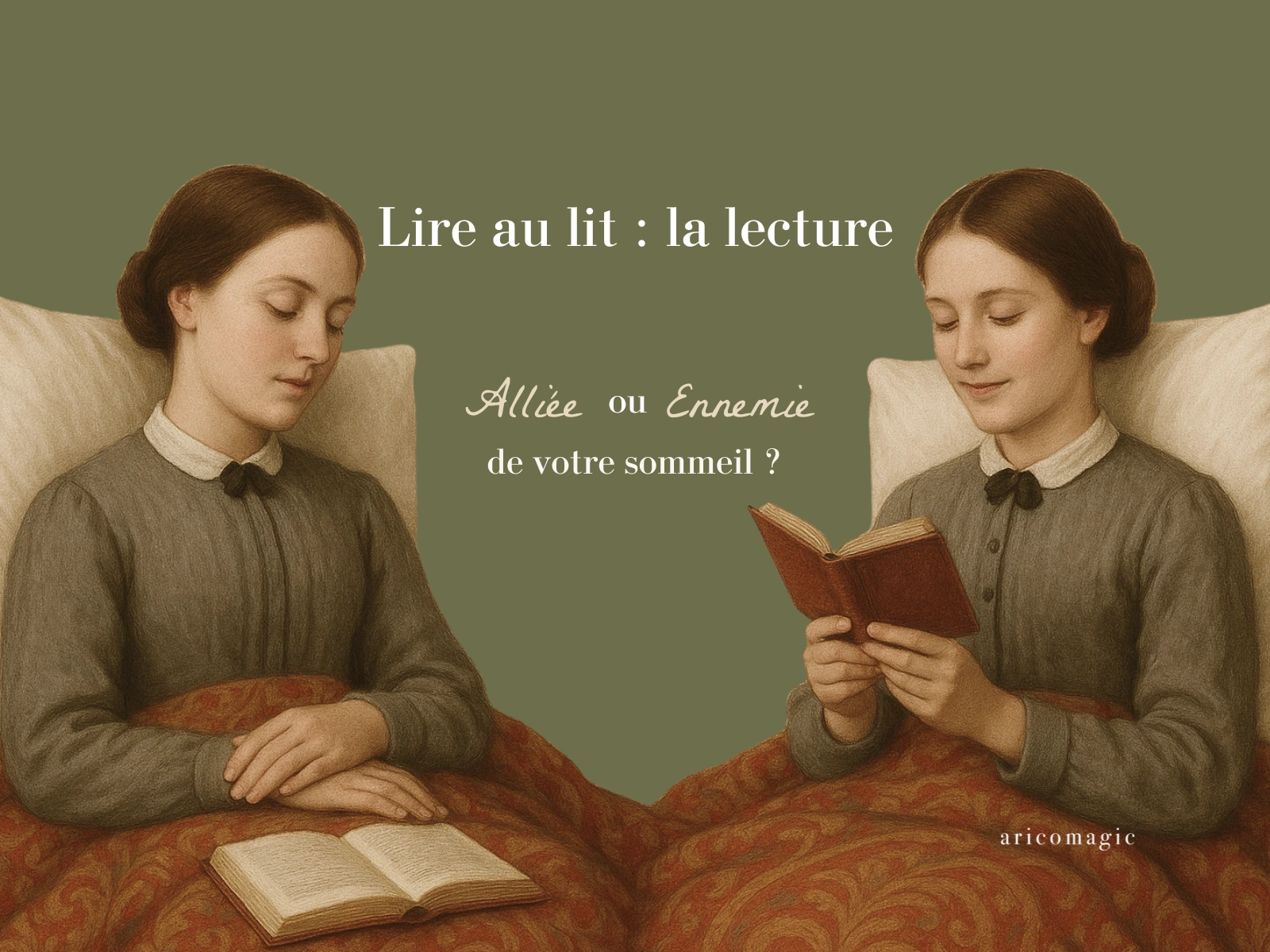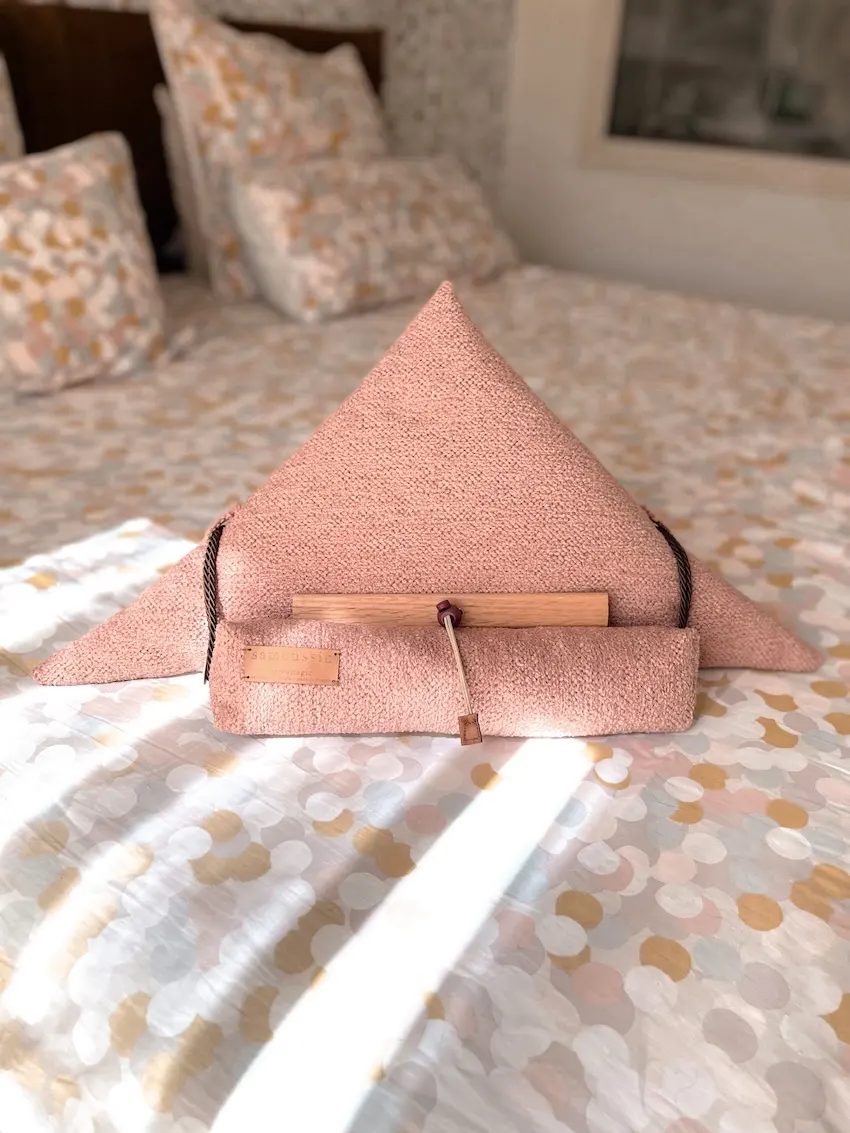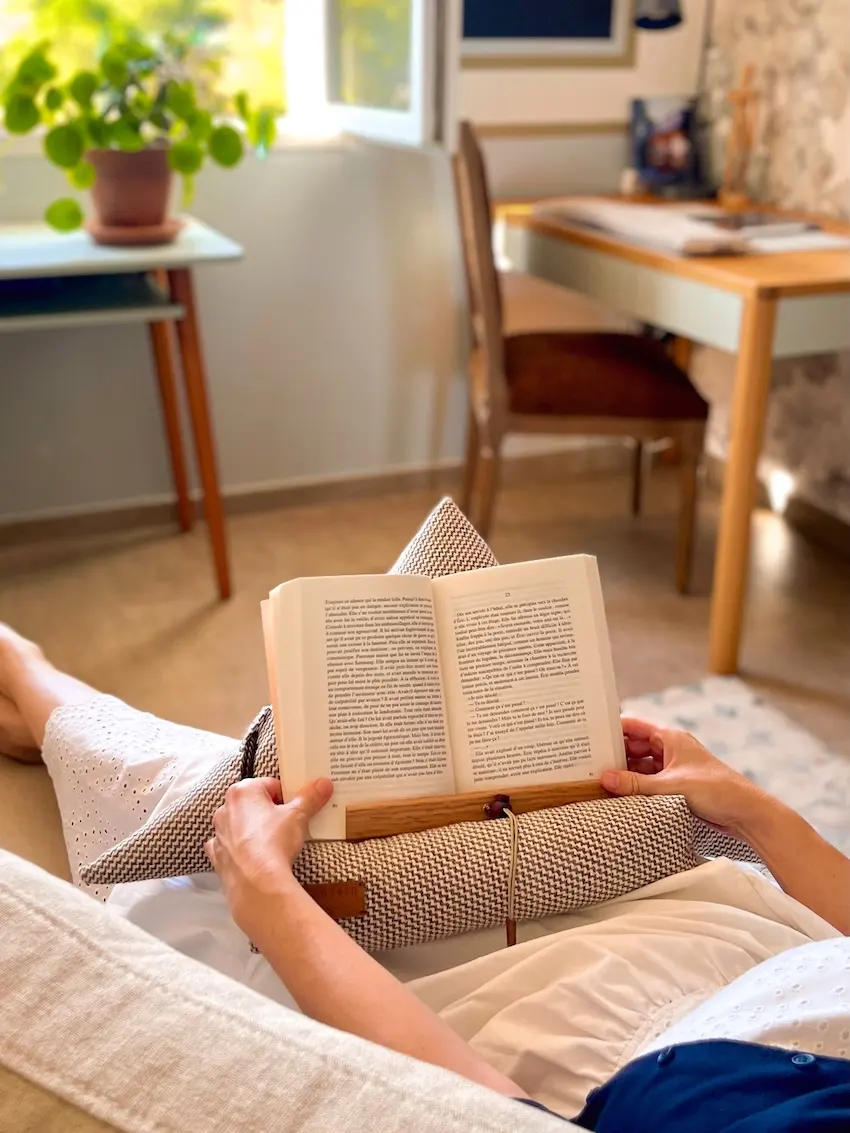Reading in Bed: To Sleep or Stay Awake?

Reading in Bed: Friend or Foe of Your Sleep?
Past midnight. You’re at the climax of your thriller. Impossible to put the book down. “Just one chapter,” you told yourself at 10 PM. Three hours later, you’re cursing your favorite author and your alarm that will ring in 6 hours.
On the flip side, you’re the type who reads two pages and peacefully drifts into Morpheus’ arms. So, reading in bed: natural sleep aid or sleep thief? The answer is as personal as your bedtime ritual, and it depends on far more factors than you might imagine.
What Science Says About Reading and Sleep
According to a study conducted by researchers at the University of Sussex in 2009, reading for just six minutes before sleep reduces stress by 68% – more effective than music (61%), a cup of tea (54%), or a walk (42%). Dr. David Lewis, the neuropsychologist who led this research, explains that reading allows for “cognitive escapism” that disconnects the brain from daily concerns.
This gentle transition to sleep is particularly effective for people prone to nighttime anxiety or mental rumination that delays falling asleep. According to the French National Institute of Sleep and Vigilance, the French go to bed at an average of 11:11 PM on weekdays and take 31 minutes to fall asleep. For some, reading speeds up this process. For others, it extends it indefinitely.
Why Some Fall Asleep and Others Don’t
The paradox is simple: if you read in an uncomfortable position that engages your muscles, your body stays alert. If your book is captivating and you have to make an effort to hold it, your brain associates “reading = effort” rather than “reading = relaxation”. The quality of your setup matters as much as your choice of reading material.
Podcasts: The New Bedtime Routine
Incidentally, more and more people are adopting a new routine: 33% of podcast listeners tune in during the evening until bedtime. Programs like “Somnifère” (Sleep Aid) or “Sleep and Relax ASMR” are phenomenally successful among insomniacs.
Just like reading, these audio contents work on the principle of mental escapism: occupying the mind just enough to prevent rumination, without stimulating it to the point of keeping it awake. The line is thin, and this is precisely where the subtlety of a good bedtime routine comes into play.
At Aricomagic, we believe that reading in bed should be a moment of gentle transition, not a negotiation between comfort and literary passion. This is precisely why we created the samoussin book support cushions: reading cushions that no longer force you to choose between physical well-being and the pleasure of reading. Because a relaxed body reads better, longer, and falls asleep when IT decides – not when your neck begs you to stop.
Reading in Bed to Fall Asleep: The Scientific Guide
Because a relaxed body reads better, longer, and falls asleep when IT decides - not when your neck begs you to stop.
Reading before sleep is not just a habit: it’s a ritual that signals to your brain that it’s time to slow down, to leave the real world for a universe that demands nothing but your presence.
If your goal is to gently drift into sleep, reading in bed can become your best natural ally. But beware, not all reading contexts are equal. The environment, posture, and even the choice of book directly influence your ability to fall asleep.
Choose the RIGHT Book (and at the Right Time)
Not all books are equal when it comes to sleep. According to sleep specialists, certain genres promote falling asleep while others keep the brain on high alert.
😴 To favor for sleep:
- Quiet, contemplative novels
- Accessible philosophical essays
- Poetry (an often overlooked genre we’ve discussed before)
- Short story collections without suspense
- Books you’ve already read (the brain relaxes because it knows the ending)
- Calming biographies
- Descriptive travel narratives
To absolutely avoid:
- Gripping thrillers and suspenseful mysteries
- Horror novels
- Books that raise deep existential questions
- Essays that make you think intensely
- Any book whose continuation you MUST absolutely know 😉
- Professional or technical works that require your concentration
The trick of avid readers: always have two books in progress – a captivating one for weekend couch reading, a soothing one for weeknight bed reading. This simple strategy allows you to satisfy your reading thirst without sacrificing your nights.
The Real 30-Minute Rule (and How to Apply It)
We often hear that you should “read 30 minutes before sleeping.” But concretely, how do you know you’ll be asleep in 30 minutes? And what do you do during that time? Let’s decode this misunderstood recommendation.
Chronobiology experts explain that it’s not about reading THEN waiting 30 minutes, but integrating reading into a progressive 30 to 45-minute routine that prepares the body and mind for sleep.
6 PM-9 PM: Disconnection Begins
Eat at least 2 hours before bedtime, finish your work screens, gradually decrease the light intensity in your home.
9:30 PM-10:30 PM: The Ritual Starts (adjust according to your desired bedtime)
- Take a warm shower (not too hot, that stimulates)
- Prepare your bedroom: ideally 64-67°F (18-19°C), dimmed lighting
- Put on comfortable clothes that signal “rest” to your brain
- Prepare a soothing herbal tea (chamomile, linden, verbena)
10 PM-10:30 PM: Reading Enters
This is NOW when you open your book. Not at the exact moment you want to sleep, but 30 minutes before (of course, adjust according to your desired bedtime). Settle comfortably, in a position that doesn’t strain your arms or neck. Read calmly, without setting a page goal.
When the first sleep signals arrive (yawning, heavy eyelids, rereading the same paragraph), it’s time to turn off the light. This method works because it transforms reading into a temporal marker: your brain understands that after the shower and reading comes sleep.
Reading in Bed Without Falling Asleep: Mission (Im)possible?
Are you part of the “I want to devour my book, not fall asleep on it” camp? You’re not alone. Many reading enthusiasts face this dilemma: how to enjoy these precious moments in the comfort of bed without systematically dozing off after three pages?
Good news: you can read in bed AND stay awake… provided you outsmart the sleep-inducing traps.
Do NOT Read Completely Lying Down
The horizontal position sends a powerful signal to your body: “it’s time to sleep.” This is an association your brain has built since childhood. Studies in neurophysiology show that lying down naturally slows heart rate and decreases blood pressure, preparing the body for sleep.
To stay alert while being comfortable, adopt a semi-reclined position with good back support. A 40-45° angle is ideal: comfortable enough to read for long periods without back tension, upright enough to maintain your alertness.
Use several pillows to prop up your back, or better yet, a reading support that holds the book at the right height without you having to lean forward. This ergonomic posture allows you to read for hours while reducing fatigue and limiting excessive drowsiness.
Strategic Anti-Drowsiness Lighting
Too dim = guaranteed sleep. Too bright = eye fatigue and headaches. The sweet spot lies between these two extremes, and it’s more precise than you might think.
For extended reading without drowsiness, you need at least 500 lux directly on your book. That’s roughly equivalent to good office lighting. A classic bedside lamp isn’t enough – it generally produces between 100 and 200 lux, which explains why your eyelids get heavy after 15 minutes.
Invest in an adjustable reading lamp with an intensity dimmer. Position it to illuminate your book without creating shadows or glaring in your eyes. Color temperature also matters: between 3000K and 4000K to stay awake (slightly cool light but not blue), versus 2700K maximum to promote falling asleep.
Free Your Arms: The Secret of Reading Marathoners
This is THE secret of heavy readers, those who devour 50 pages per evening without ever falling asleep: they NEVER hold their book. Why? Because muscular effort, even minimal and unconscious, generates fatigue. And fatigue invites sleep.
Holding a 14-ounce (400-gram) book for 30 minutes engages your forearms, wrists, shoulders, and even your neck (which compensates for micro-imbalances). This constant muscular tension, though slight, sends fatigue signals to your brain. After 20-30 minutes, your body demands rest.
A reading support radically transforms your endurance. By completely eliminating the holding effort, you eliminate the main source of physical fatigue. Result? You go from 20 minutes to 2 hours of reading without even realizing it.
Telltale signs that you need a reading support:
- You change position every 10-15 minutes without finding THE right angle
- Your forearms or wrists burn, especially with thick volumes
- You “wake up” startled with the book on your face (classic!)
- You reread the same paragraph 3 times without understanding what’s written
- You abandon your reading even though the story captivates you
- The next day, your neck or shoulders hurt
- You avoid heavy books because of their weight
- You prefer reading in the living room even though your bed is more comfortable
If you check at least 3 of these boxes, your problem isn’t sleep – it’s your setup.
Timing Matters: Not Just Anytime
Last crucial point: WHEN you read in your bed influences your alertness level. Reading at 11 PM after a long day means seeking sleep. Reading at 3 PM on a Sunday afternoon in your cozy bed means enjoying a pure reading moment and might be worth a good nap.
If you really want to read in bed without sleeping on weekdays, try morning reading: 15 minutes of reading upon waking, still in bed, before starting your day. This practice adopted by many entrepreneurs allows you to enjoy the comfort of bed while being naturally awake. It’s a moment of gentle transition between sleep and action, infinitely more pleasant than a brutal awakening.
At aricomagic, we’ll never tell you how you SHOULD read. Some evenings, you’ll want to peacefully fall asleep after a chapter of Colette. Others, you’ll want to devour 100 pages of a Dumas novel in one go, swept away by The Three Musketeers’ adventures. True freedom is having the choice. And the comfort for both. Because ultimately, the best time to read… is when your body doesn’t call you to order. When you can lose yourself in the story without negotiating with your neck, arms, or eyelids. Whether you seek sleep or flee from it, your reading-in-bed experience deserves better than an awkward compromise between passion and discomfort. It deserves a true moment of fertile decoration – where useful and pleasant become one.






